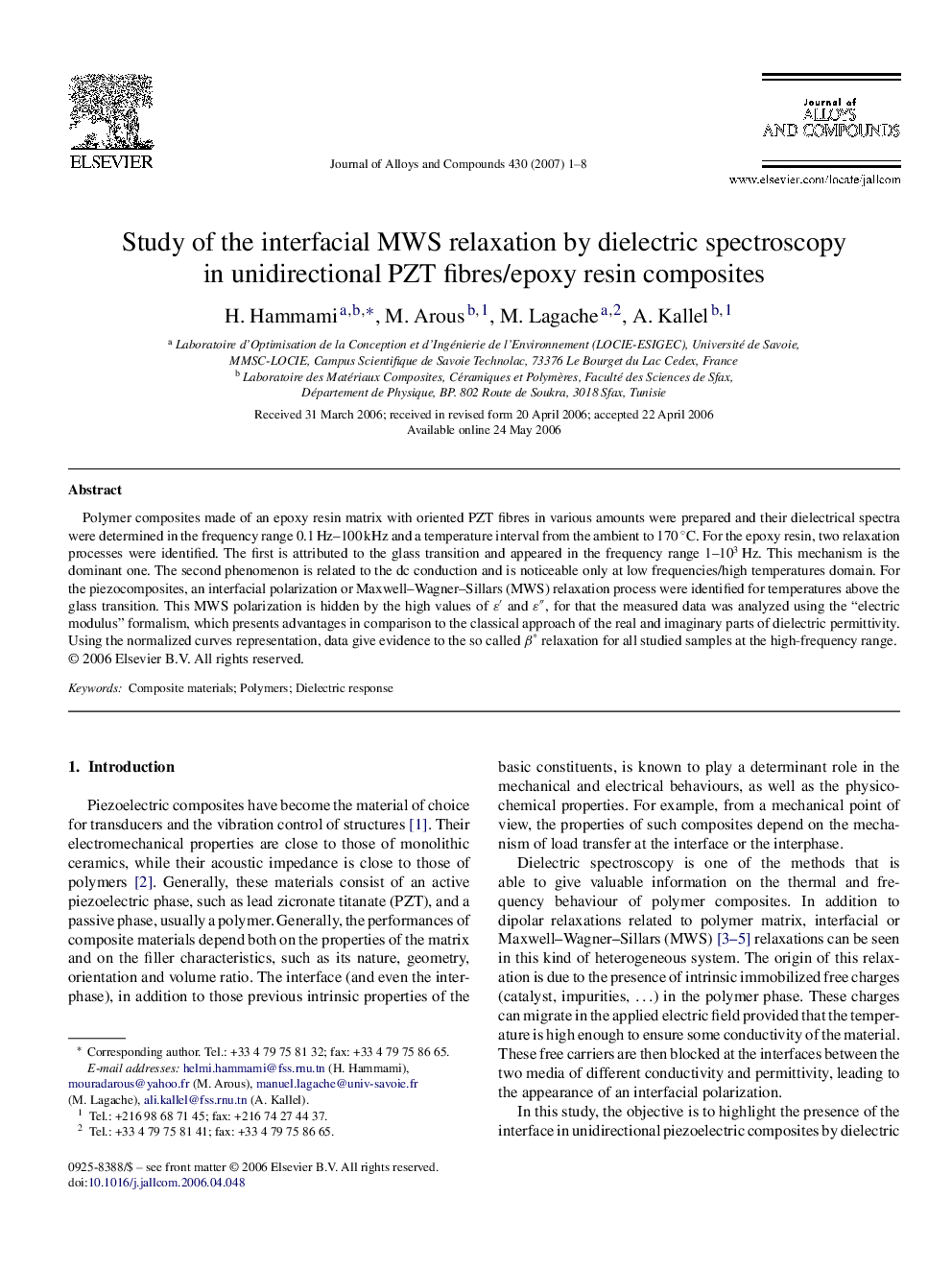| Article ID | Journal | Published Year | Pages | File Type |
|---|---|---|---|---|
| 1625993 | Journal of Alloys and Compounds | 2007 | 8 Pages |
Polymer composites made of an epoxy resin matrix with oriented PZT fibres in various amounts were prepared and their dielectrical spectra were determined in the frequency range 0.1 Hz–100 kHz and a temperature interval from the ambient to 170 °C. For the epoxy resin, two relaxation processes were identified. The first is attributed to the glass transition and appeared in the frequency range 1–103 Hz. This mechanism is the dominant one. The second phenomenon is related to the dc conduction and is noticeable only at low frequencies/high temperatures domain. For the piezocomposites, an interfacial polarization or Maxwell–Wagner–Sillars (MWS) relaxation process were identified for temperatures above the glass transition. This MWS polarization is hidden by the high values of ɛ′ and ɛ″, for that the measured data was analyzed using the “electric modulus” formalism, which presents advantages in comparison to the classical approach of the real and imaginary parts of dielectric permittivity. Using the normalized curves representation, data give evidence to the so called β* relaxation for all studied samples at the high-frequency range.
